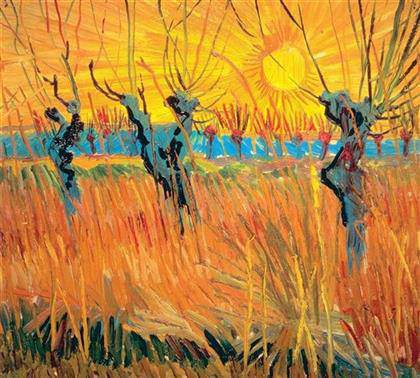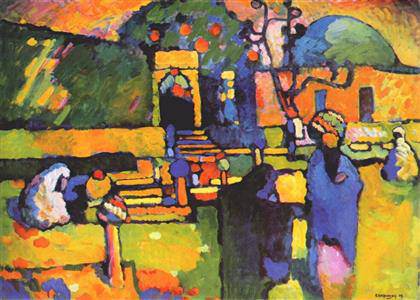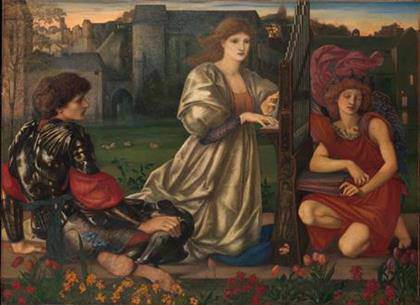
Vincent van Gogh (1866-1944)
Pollard Willows at Sunset, 1888
Otterlo, The Netherlands, Kröller-Müller Museum

Wassily Kandinsky (1866-1944)
Arabian Cemetery, 1909
Hamburger Kunsthalle, Germany
Van Gogh to Kandinsky – Montreal Museum of Fine Arts The Montreal Museum of Fine Arts (MMFA) presents — in a Canadian exclusive — the exhibition ‘Van Gogh to Kandinsky: Impressionism to Expressionism, 1900-1914’, which runs from October 11, 2014 to January 25, 2015.]]>
Source: Montreal Museum of Fine Arts
A century after the outbreak of the First World War, this exceptional exhibition of over one hundred paintings and an equal number of drawings and prints executed by the greatest avant-garde figures of the time, sheds new light on the extraordinary artistic cross-currents presiding over the major developments in modern art that took place in Germany and France between 1900 and 1914. First on view in Switzerland at the Kunsthaus Zürich, and then at the Los Angeles County Museum of Art, the Montreal Museum of Fine Arts’ showing of the exhibition is distinguished not only for its exclusive presentation of major works, but also for its wealth of documentation, including more than 200 photographs, stereographic images and magazines focusing on Paris in 1900, as well as chronicling World War I, providing a broad historical context for this creative era.
The art produced by the French and German avant-garde between the end of the nineteenth century and the outbreak of World War I is widely celebrated today. Its creators were artists renowned in France — Cézanne, Gauguin, Matisse, Picasso, Signac, Van Gogh, Vlaminck — and in Germany — Heckel, Kandinsky, Kirchner, Klee, Nolde, Pechstein. Their works, distinguished by their originality, power and beauty, are considered among the early masterpieces of modern art. When art history chronicled this fascinating era, two separate critical discourses emerged, positing distinct French and German movements. Thanks to the extensive research of Timothy O. Benson, curator of the Robert Gore Rifkind Center for German Expressionist Studies at the Los Angeles County Museum of Art, this exhibition — exceptional by the importance of the works on loan — provides us with a broader understanding of the complex cross-cultural influences during the time, which gave rise to this phenomenally rich and compelling artistic production.
The political context of this prewar era informs the way we view this remarkable period of creativity and exchange between French and German artists. One hundred years after the outbreak of World War I, we consider the particularly cosmopolitan atmosphere in Europe that set the stage for this period of artistic ferment, as well as the circumstances that brought it to a dramatic halt when war was declared in 1914. The exhibition follows the trajectory of Expressionism, from its roots in Paris in 1900 — the universally acknowledged centre of the arts at the time — to Germany in 1914, when several exponents of Expressionism responded to the call to arms.
Related content
German and French expressionism at the LACMA (exhibition, 2014)
Follow us on:


